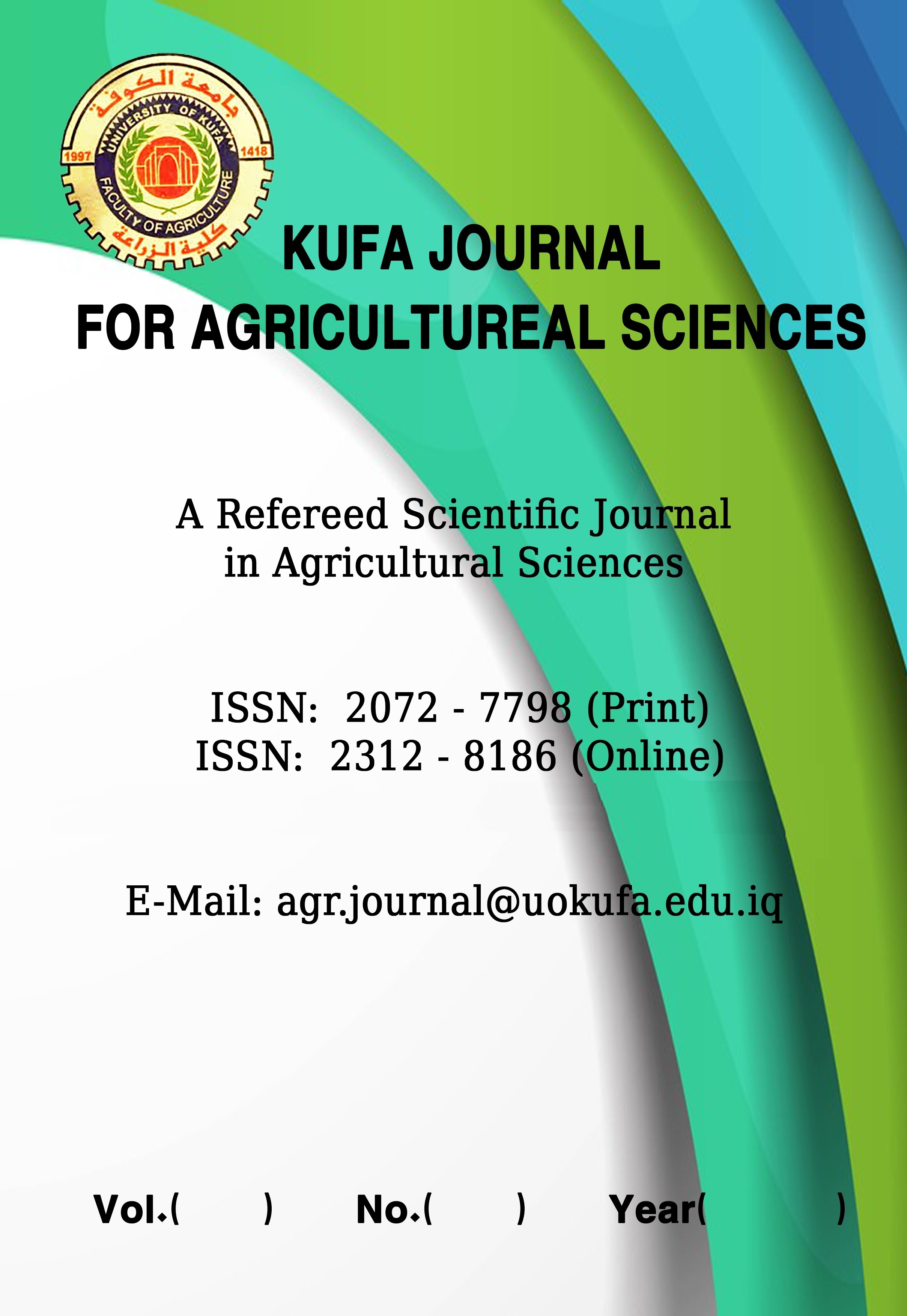Efficacy of Chitosan and Salicylic acid for Controlling Gray mold Caused by Botrytis cinerea on Greenhouse Tomato
DOI:
https://doi.org/10.36077/kjas/2023/v15i1.10297Keywords:
gray mola, tomato, chitosan, salicylic acidAbstract
Application of Chitosan (CH) and salicylic acid (SA) in controlling the fungus Botrytis cinerea that causes gray mold on tomato fruits is a successful and safe alternative approach to chemical pesticides. Chitosan and salicylic acid were applied as Pre-harvest treatment at the concentration of 2000 mg/l and 250 mg/L under field the conditions on three different ripening stages of tomato fruits Turning, Pink, Light Red stages and to determine the best stage for application. The best concentration was determined in enhancing plant defenses against the pathogen and studying the effect of factors on the levels of some enzymes related to induction of resistance, such as peroxidase enzyme POD and PAL enzyme. The application of SA and CH had a significant effect in increasing the activity level of both enzymes, and treatment with salicylic revealed to an increase in the activity of POD enzyme in the treated plants and for the three fruit maturity stages (Turning, Pink, Light red), where the enzyme level was 17.33, 16.72 and 15.5 min /gm. The three stages of fruit ripening had an effect on increasing the activity of the POD enzyme, as it recorded 12.27, 12.12, 12.1 min/gm fresh weight, and the ripening stage affected the PAL enzyme, which was recorded at a level of 32.27, 31.53, 31.87 mg/gm fresh weight, for the three stages, respectively. Chitosan and salicylic did not differ in extending the shelf life of fruits and reducing losses depending on the rate of healthy fruits for the three stages at the end of the storage period at 25°C. Chitosan at a concentration of 2000 mg-1/L differed significantly from other concentrations in inhibiting the pathogenic fungus, as well as salicyac at a concentration of 250 mg-1/L was superior in its effectiveness compared with other concentrations. However, chitosan had a significant effect on the biofilm formation of B. cinerea, which displayed an average absorption degree of 0.53 (OD), while salicylic did not affect fungal biofilm formation, as the average absorption degree was 1.2 (OD) which did not differ from the control treatment.
Downloads
Downloads
Published
How to Cite
Issue
Section
License
Copyright (c) 2023 Muhammed Ridha Hussein Al-Mussawi , Firas Ali Ahamed

This work is licensed under a Creative Commons Attribution 4.0 International License.
Kufa Journal for Agricultural Sciences is licensed under the Creative Commons Attribution 4.0 International License, which allows users to copy, to create extracts, abstracts and new works from the Article, to alter and revise the Article, and to make commercial use of the Article (including reuse and/or resale of the Article by commercial entities), provided the user gives appropriate credit (with a link to the formal publication through the relevant DOI), provides a link to the license, indicates if changes were made and the licensor is not represented as endorsing the use made of the work. The authors hold the copyright for their published work on KJAS website, while KJAS responsible for appreciate citation for their work, which is released under CC-BY-4.0 enabling the unrestricted use, distribution, and reproduction of an article in any medium, provided that the original work is properly cited.














